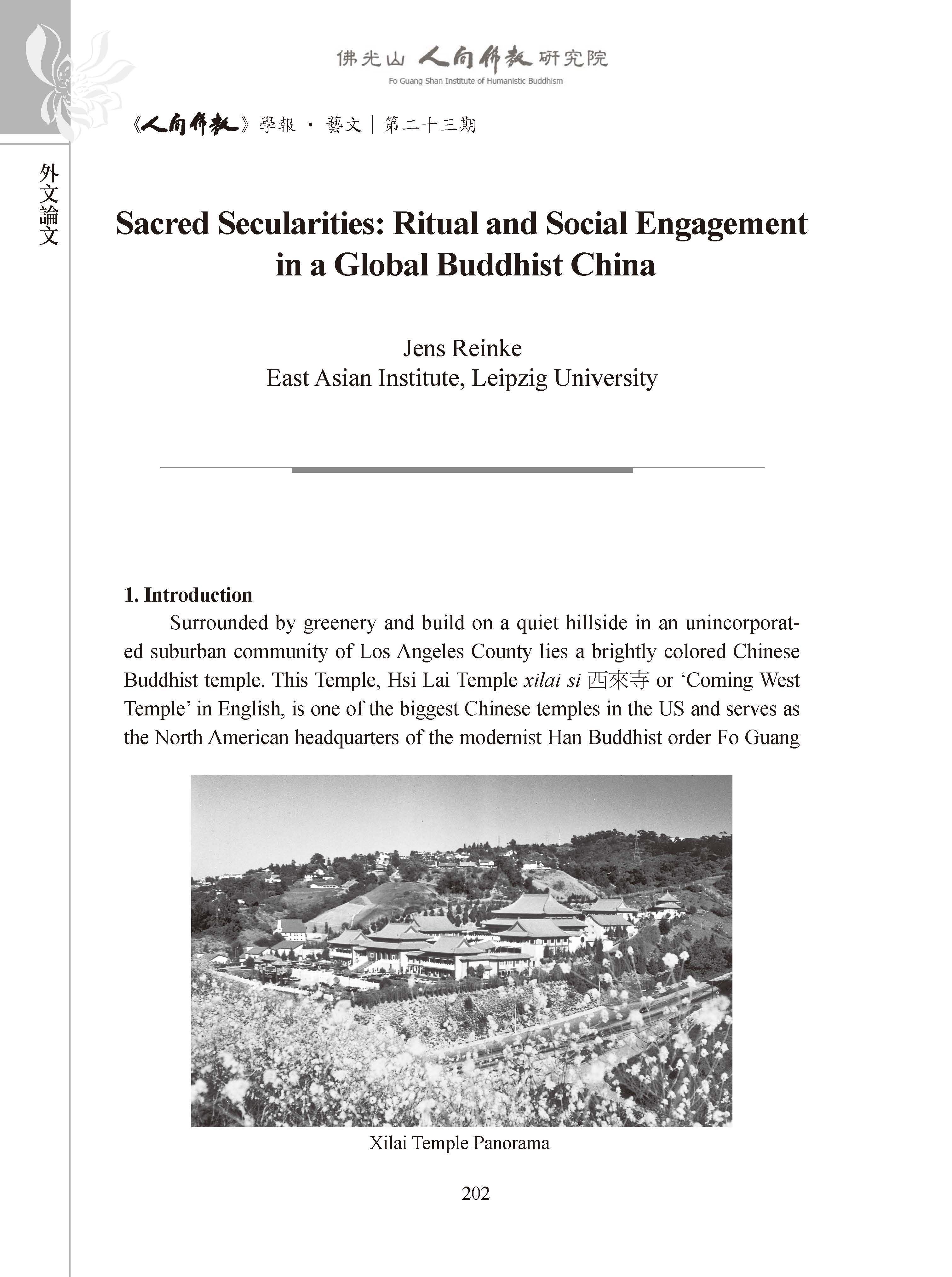
|
Sacred Secularities: Ritual and Social Engagement in a Global Buddhist China
分類
論文
期別
《人間佛教學報‧藝文》第23期
作者
Jens Reinke
單位職稱
East Asian Institute, Leipzig University
其他名稱
世俗的神聖性質——全球佛教華人地區的法會及社會參與
編者
妙凡、蔡孟樺主編
摘要
Surrounded by greenery and build on a quiet hillside in an unincorporated suburban community of Los Angeles County lies a brightly colored Chinese Buddhist temple. This Temple, Hsi Lai Temple xilai si 西來寺 or ‘Coming West Temple’ in English, is one of the biggest Chinese temples in the US and serves as the North American headquarters of the modernist Han Buddhist order Fo Guang Shan 佛光山 (Buddha’s Light Mountain). The Buddhist tradition promoted by Fo Guang Shan is renjian 人間or Humanistic Buddhism.1 It is a modern Buddhist tradition with its roots in late 19th and early 20th century China that has become Buddhist mainstream in Taiwan today (Long 2000). Fo Guang Shan is one of the biggest promoters of this tradition, not only in Taiwan but on a global scale, and while different groups have adapted different interpretations of renjian Buddhism, one of the primary characteristics of this modern tradition is a new esteem for society, or, in other words, the sphere of ‘the secular’.
引文
Jens Reinke:〈Sacred Secularities: Ritual and Social Engagement in a Global Buddhist China〉,收入妙凡、蔡孟樺主編:《人間佛教學報‧藝文》第23期,高雄:財團法人佛光山人間佛教研究院,2019年 08月,頁202-221。
全文下載











